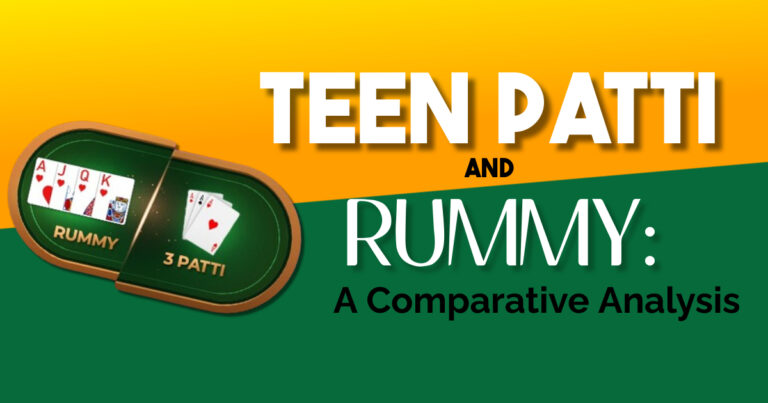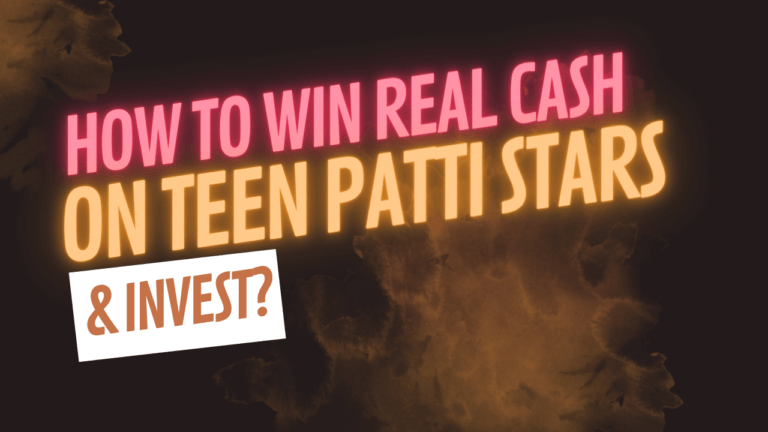Prize Structures in Teen Patti: Strategies and Formats
Teen Patti, a popular card game originating from the Indian subcontinent, has evolved significantly over the years, including the rise of major Teen Patti tournaments. While traditionally played in informal settings, the game has now made its way into organized tournaments with structured prize pools. These tournaments attract a diverse group of players, ranging from casual enthusiasts to seasoned professionals. Understanding the prize structures in these tournaments, including those for Rummy games, is essential for both participants and organizers, as it directly influences the competitive nature of the event and the strategies employed by players.

The Basics of Teen Patti Tournaments
Teen Patti, also known as ‘Indian Poker,’ is a gambling card game played with a standard 52-card deck. The objective is to have the best three-card hand or to convince opponents, including some Teen Patti stars, to fold before the showdown. In tournament settings, the game is typically played in a knockout format, where players compete in multiple rounds until a final winner is determined. The prize structure of these tournaments is a critical component that dictates how the prize money is distributed among the participants.
Types of Prize Structures
The prize structure in Teen Patti tournaments can vary widely depending on the format of the tournament, the number of participants, and the overall prize pool. There are several common prize structures that are used in these tournaments:
- Winner-Takes-All: In this prize structure, the entire prize pool is awarded to the last player standing. This format is typically used in smaller tournaments with fewer participants. The high stakes and the potential for a large payout make this structure attractive to aggressive players who are confident in their abilities. However, it also increases the risk, as there is no consolation for those who do not win the tournament.
- Top-Heavy Distribution: This is the most common prize structure in larger Teen Patti tournaments. In this format, the majority of the prize pool is awarded to the top few players, with the winner receiving the lion’s share. For example, the first-place finisher might receive 50% of the total prize pool, the second-place finisher 30%, and the third-place finisher 20%. This structure rewards top performers while still offering some incentive for those who finish near the top.
- Flat Distribution: A flat prize structure spreads the prize money more evenly across a larger number of participants. Instead of just rewarding the top finishers, this format allows a greater number of players to win a portion of the prize pool. For example, the top 10% of finishers might all receive a share of the prize money, with the amounts decreasing as the rankings go down. This structure is often used in Teen Patti tournaments with a large number of participants, as it encourages more people to compete by offering a higher likelihood of winning some prize money.
- Progressive Prize Pool: In some Teen Patti tournaments, the prize pool grows as the tournament progresses. This can happen in a variety of ways. One common method is to have an increasing buy-in for each round, with a portion of the buy-in added to the prize pool. Another method is to have players contribute to the prize pool by paying an additional fee to stay in the tournament after a certain number of rounds. This structure adds an element of strategy, as players must decide whether to continue playing and risk more money for a chance at a larger prize.
- Guaranteed Prize Pools: Some Teen Patti tournaments, as highlighted in this guide to Teen Patti tournament, offer guaranteed prize pools, regardless of the number of participants. This means that the organizer guarantees a minimum amount of prize money, even if the total buy-ins do not reach that amount. This structure is particularly attractive to players, as it ensures that the prize pool will be substantial. However, it also poses a risk to organizers, who may have to cover the difference if the buy-ins do not meet the guaranteed amount.
- Satellite Tournaments and Prizes: Satellite tournaments are smaller, preliminary events where the prize is often entry into a larger tournament rather than cash. These Teen Patti tournaments allow players with smaller bankrolls to compete for a spot in a high-stakes event. The prize structure in satellite tournaments is typically flat, with a certain number of top finishers receiving entry into the main event. This structure is popular in larger Teen Patti circuits, as it provides an affordable path for players to reach major tournaments.
Factors Influencing Prize Structures
Several factors influence the choice of prize structure in Teen Patti tournaments. Understanding these factors can help both players and organizers make informed decisions.

- Tournament Size: The number of participants in a tournament plays a significant role in determining the prize structure. Larger Teen Patti tournaments with hundreds or thousands of players are more likely to use a flat or top-heavy prize structure to distribute the prize money across a wider range of finishers. Smaller tournaments, on the other hand, might opt for a winner-takes-all or progressive prize pool to maintain interest and competitiveness.
- Buy-In Amount: The amount of the buy-in also affects the prize structure. Higher buy-ins generally lead to larger prize pools, which can justify a more top-heavy distribution. Conversely, lower buy-ins might necessitate a flatter prize structure to ensure that a significant number of players receive a return on their investment.
- Player Skill Level: The skill level of the participants can influence the prize structure as well. In tournaments where the skill level is expected to be high, a top-heavy or winner-takes-all structure might be more appropriate, as it rewards the best players. In contrast, in tournaments designed for casual or beginner players, a flatter prize structure might be used to encourage participation and reduce the risk of large losses.
- Sponsor Contributions: Sponsorship can also impact the prize structure. In some cases, sponsors may contribute additional funds to the prize pool, allowing for a more generous distribution of prizes. This can lead to larger guaranteed prize pools or a more balanced distribution of winnings.
- Tournament Goals: The overall goals of the Teen Patti tournament organizers can also influence the prize structure. If the goal is to attract a large number of participants, a flatter prize structure or guaranteed prize pool might be used to entice players. If the goal is to create a high-stakes, competitive environment, a winner-takes-all or top-heavy structure might be more appropriate.
Strategic Implications for Players
The prize structure of a Teen Patti tournament has a significant impact on the strategies employed by players. In a winner-takes-all format, players may adopt a more aggressive style on platforms for playing Teen Patti, taking risks to knock out opponents and accumulate chips. In a top-heavy structure, players might be more conservative in the early stages, aiming to survive until the final rounds where the big prizes are awarded. In a flat distribution, players might focus on consistent play and avoiding major losses to ensure they finish in the money.
Understanding the prize structure can also help players make informed decisions about which tournaments to enter. For example, a player who prefers a lower-risk environment might opt for a tournament with a flat prize structure, while a player who thrives on high stakes might choose a winner-takes-all event.
Conclusion
Prize structures in Teen Patti tournaments are a crucial element that affects the dynamics of the game and the strategies employed by players. Whether it’s a winner-takes-all format, a top-heavy distribution, a flat structure, or a progressive prize pool, each structure offers unique advantages and challenges. Players and organizers alike must carefully consider these factors when participating in or designing a tournament, especially when facing opponents in Teen Patti. By understanding the nuances of different prize structures, players can better position themselves for success, and organizers can create engaging, competitive events that attract a wide range of participants.







